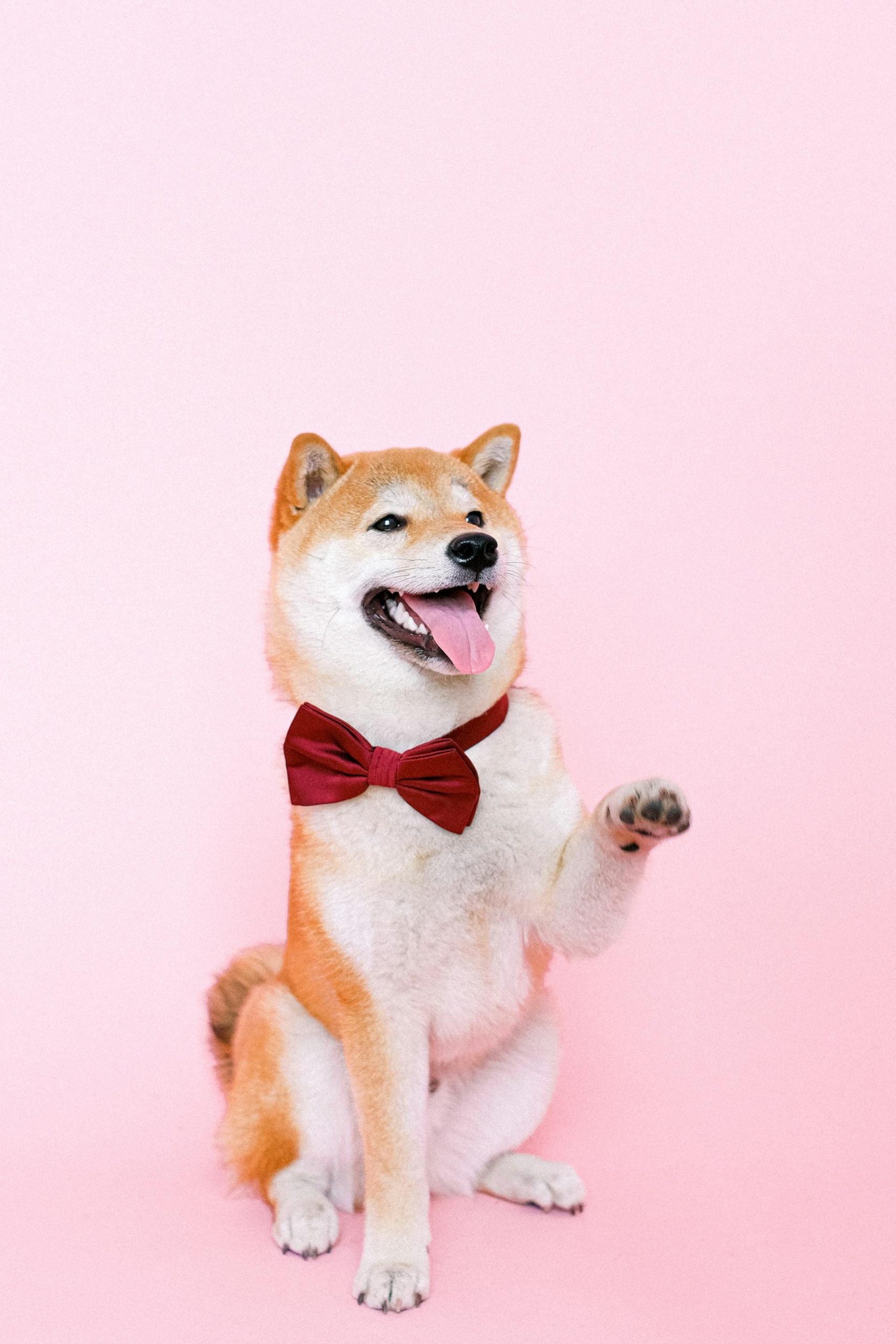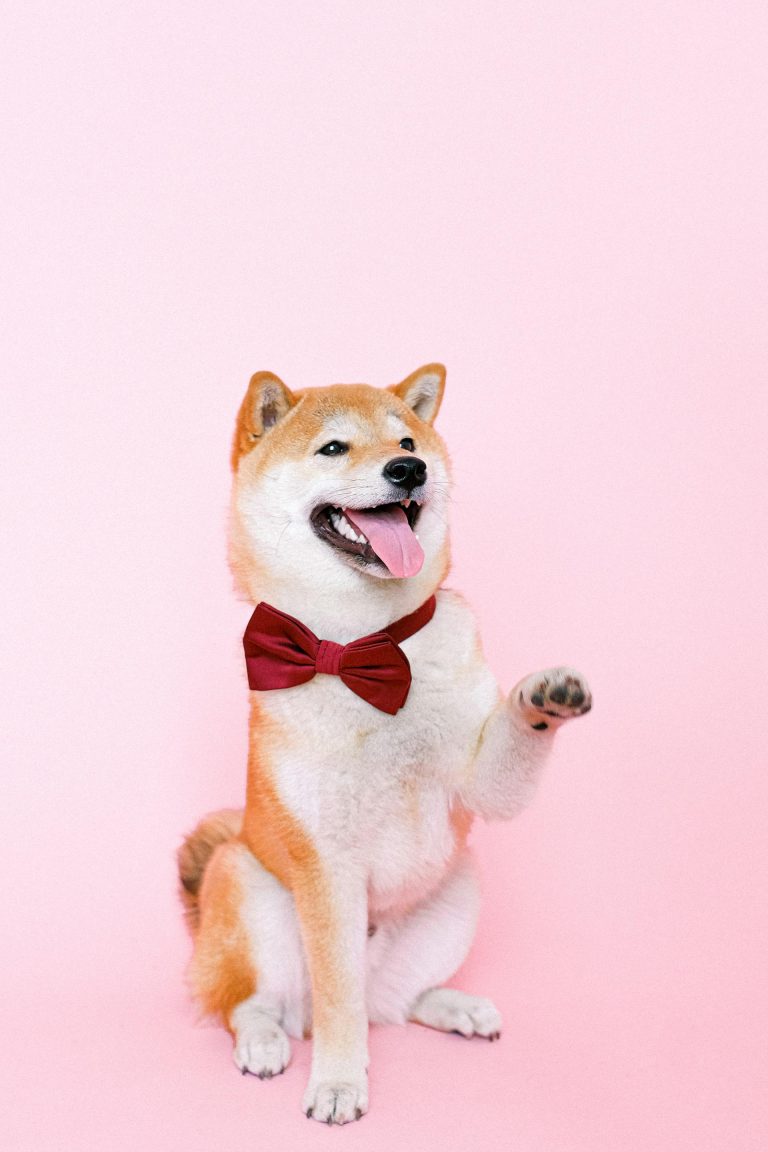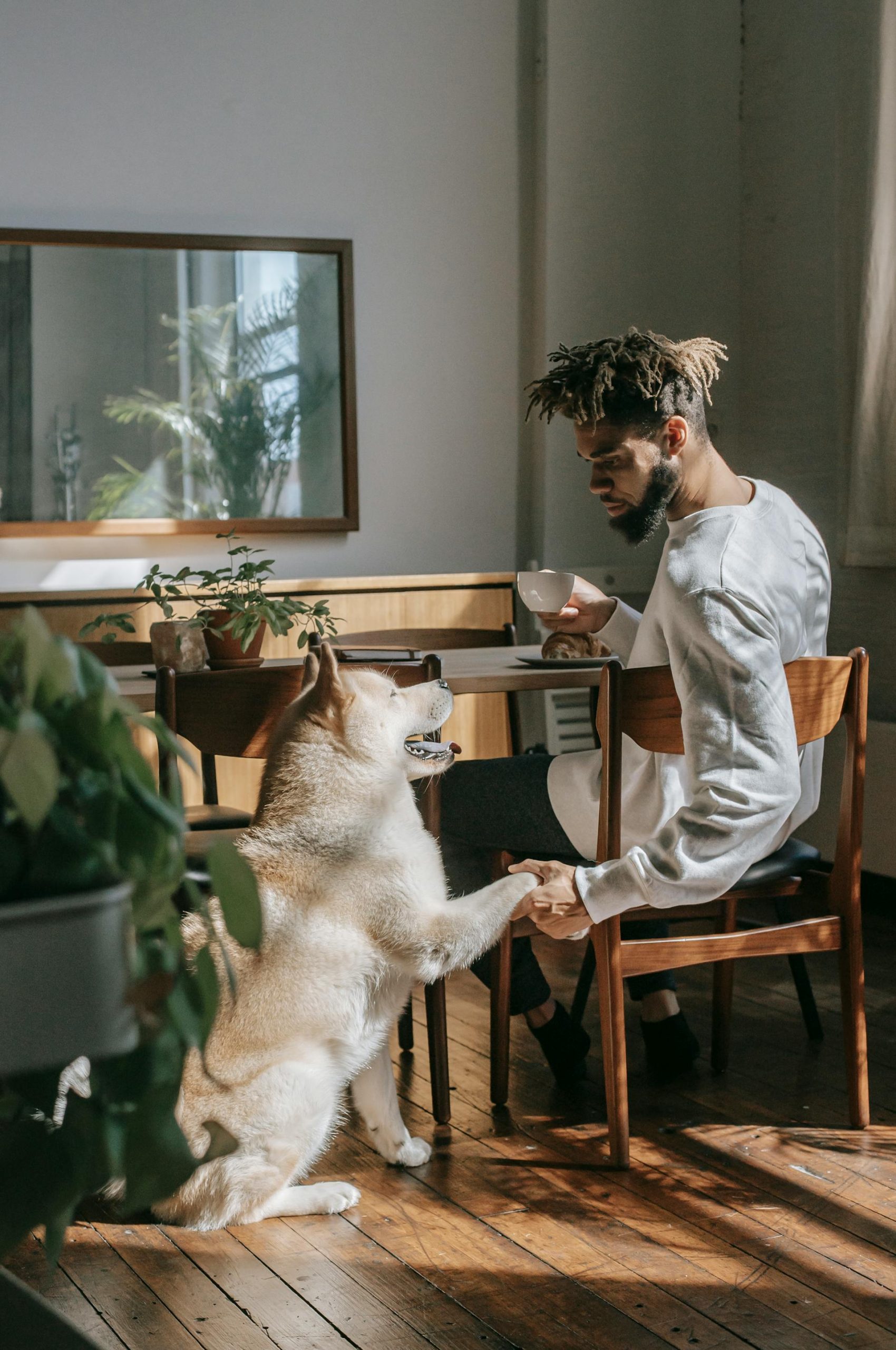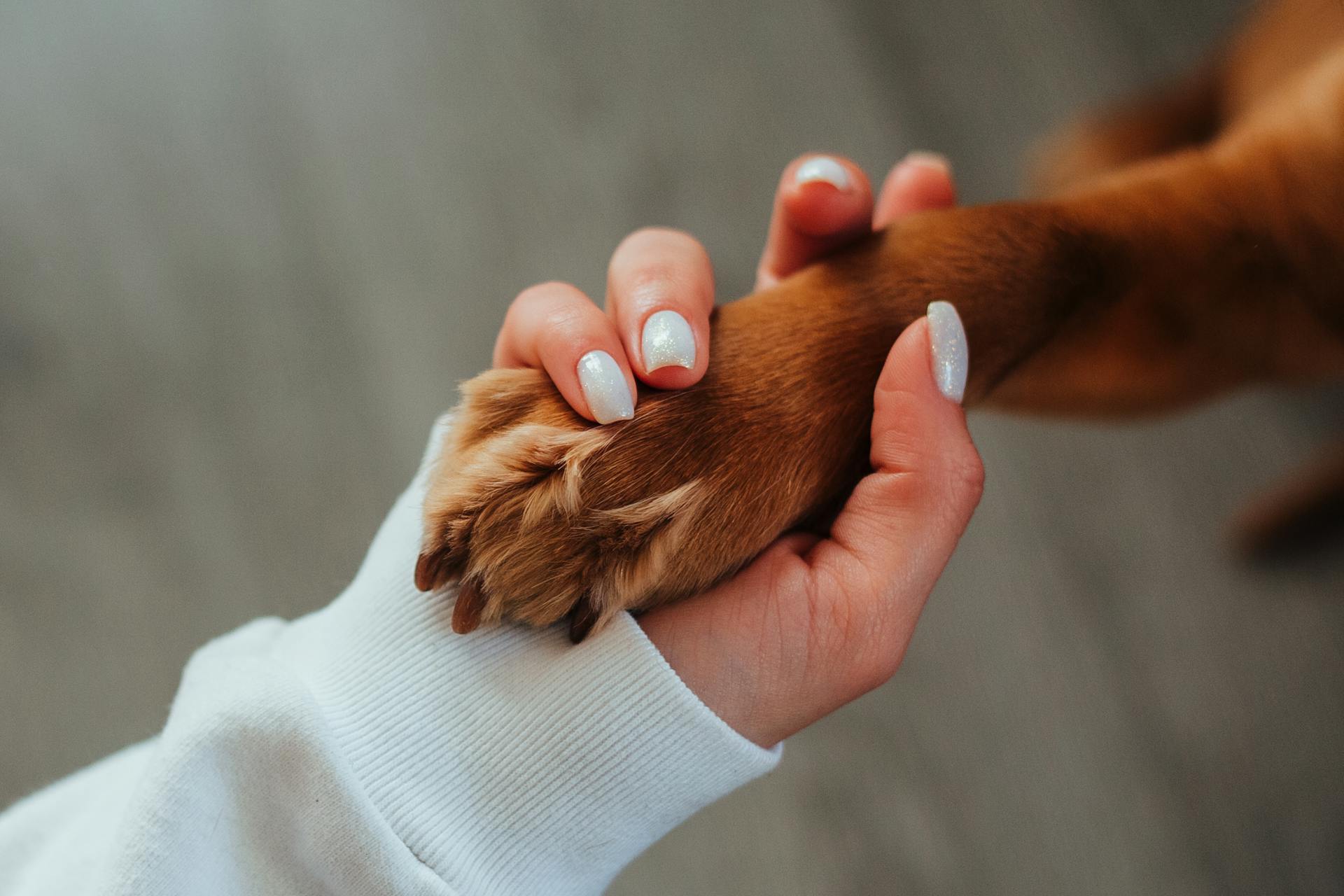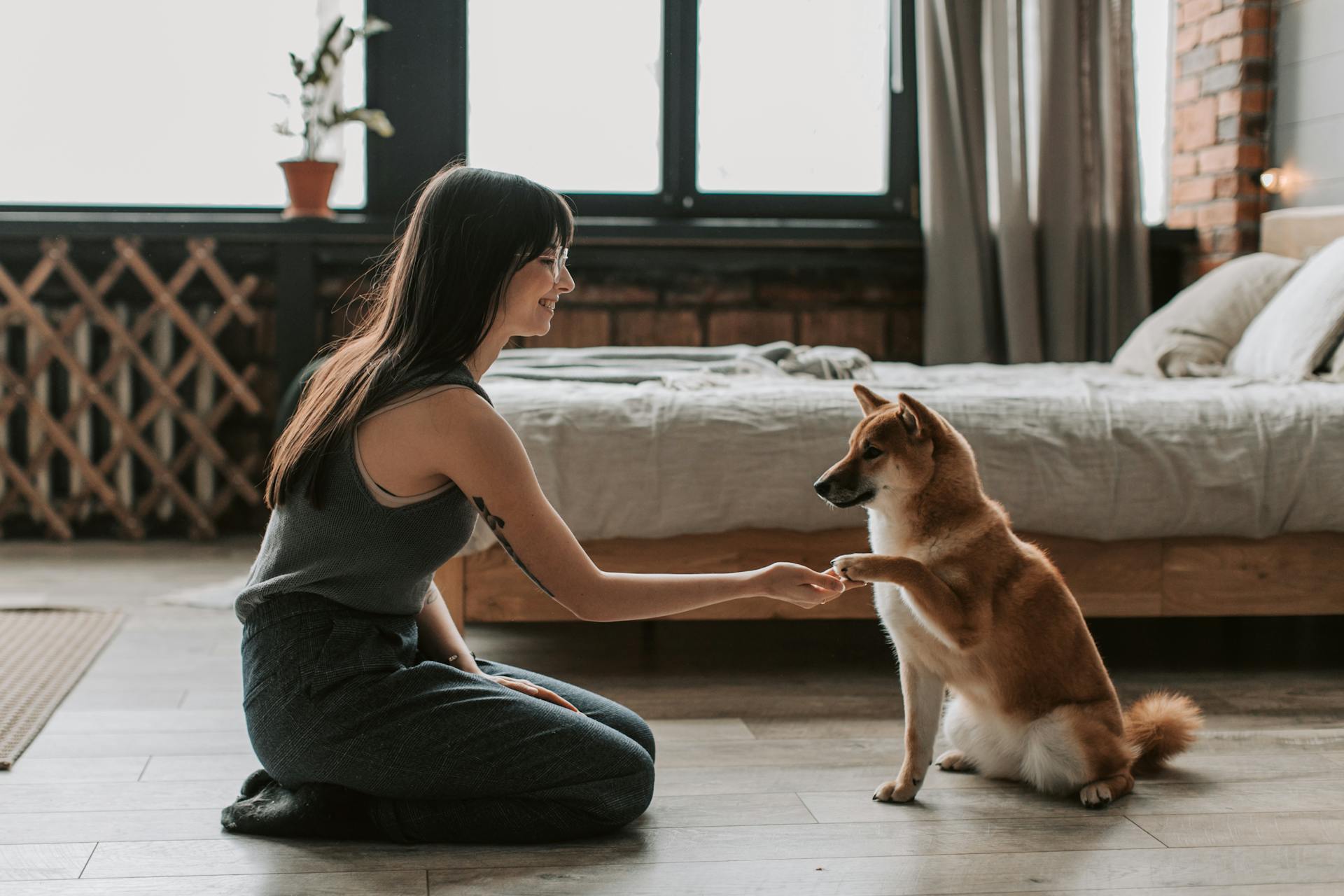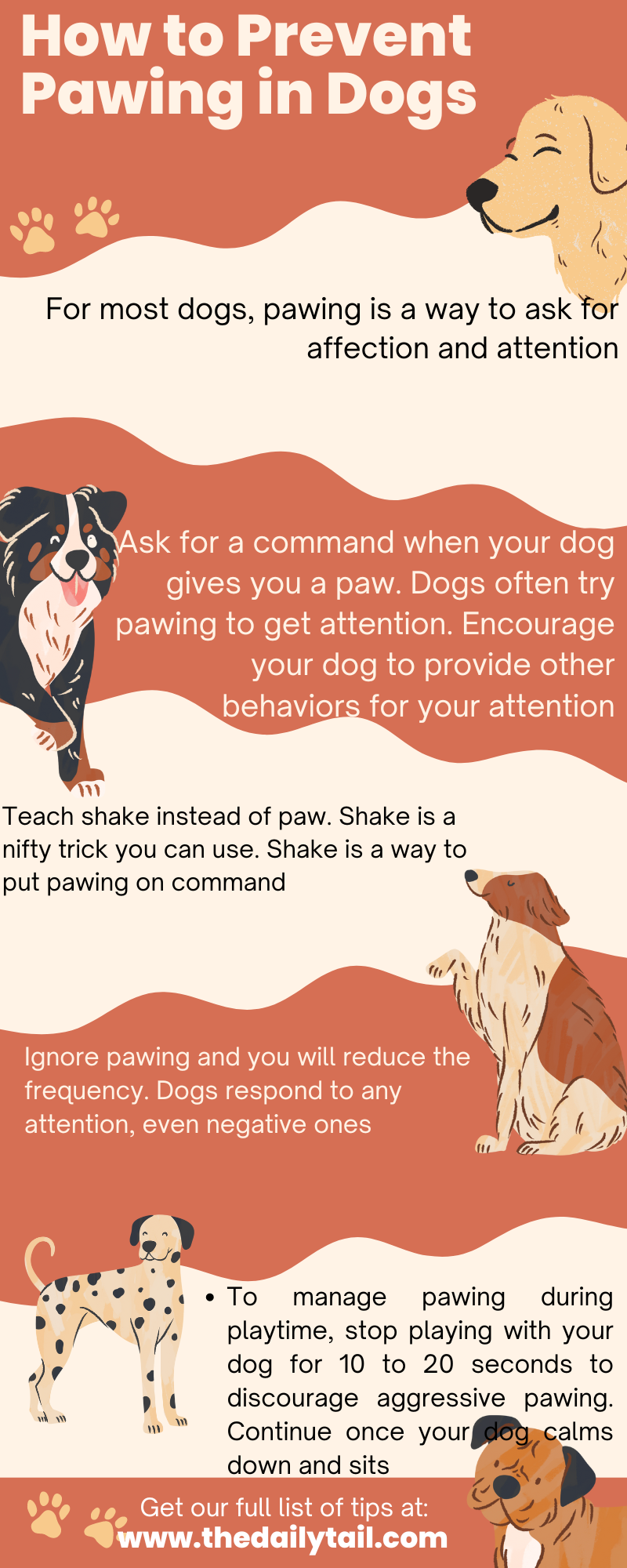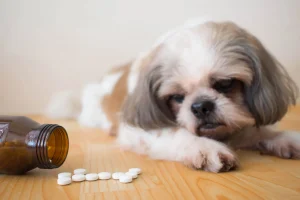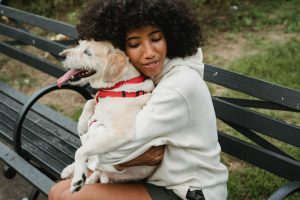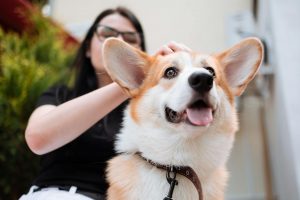We do this all the time. We see our dog do something, and we go, “Awwww, so cute”. Well, yes, our dogs are cute and adorable. Yet, sometimes, what we consider adorable, might be a bit problematic. For example, pawing.
Many dogs will put their mouth or paw on us. They do not have the intention to hurt us. Instead, they are looking for attention and affection. Known as pawing, this behavior occurs mostly with puppies. Yet, often, it continues well into adulthood.
Should you try to prevent it? Should you teach your dog something else? We break down all your questions.
What is Pawing?
Puppies begin to explore the world with their mouth. They bite and chew on things. But they need to learn how to control their bite. We call this bite inhibition. In the same spirit, they need to learn that when they put their paw on us, their claws can damage our skin.
This problem often occurs with toddlers or elderly people. They have fragile skin that cannot survive pawing.
Pawing is when a dog uses its paw to attract attention. I have to say, it is harmless. Pawing is part of natural play behavior.
As dogs evolve, they learn that certain behaviors result in something positive. For example, pawing can result in attention. And your dog learns quickly that by pawing at your arm, you will respond and provide attention.
Sadly, dogs do not understand that they might also put their sharp claws at the end of their paw on your skin. Pawing looks cute, and it shows a great interaction between dogs and people. Yet, you should teach your dog to paw gently, or avoid pawing altogether.
If your dog interacts with many people, as a dog owner, you have a responsibility. And that is to ensure interactions are safe.
Why do Dogs Put Their Paw on You?
What do dogs try to communicate with pawing? With any dog behavior, the first step is to understand the context and dynamics of the relationship. For example, dogs might show a behavior to express strong positive feelings or ask for something.
Pawing, for example, can be a learned experience. Dogs use this “attention card” when they want to play. A dog pawing at you is a clear sign. Your dog wants to initiate something. That can range from human playing, moving, taking your dog for a walk, or simply petting him. Most importantly, engage in any way.
Pawing for affection
In most cases, dog experts and behaviorists agree that pawing is a way to ask for affection and attention. For dogs, touch releases the feel-good hormone. When you pet your dog, your pup releases oxytocin. Both you and your puppy benefit from the cuddling session.
While there is no “I love you” in this instance, the message is clear. Your dog feels it. That is why dogs might use their paw to force scratching or petting. If you stop too soon, your dog will tell you.
Pawing for Food
Sometimes, pawing might be your dog’s way of saying, “Feed me”. If you reward pawing with treats, dogs get the message. And that is pawing = food.
Whether you do this consciously or not, the result is the same. Pet parents reinforce pawing with their response. It is a “vicious cycle”. It starts with pawing, then you think of how cute it is, reward it with attention or petting, and your dog learns that will get them attention next time.
While the whole cycle is adorable, you have to think for future references. You should set boundaries so your pup is not pushy or demands attention on his terms.
You never want to reward problematic behaviors. Anytime you reward action with attention, it is a double-edged sword.
When Should You Worry?
As a dog owner and pet parent, pawing might be a frustrating thing to deal with. Unwanted pawing is annoying. In some rare cases, aggressive pawing can cause pain.
The good news is there are ways to reduce your dog’s pawing. You should teach your pooch to engage in other behaviors to gain attention.
Let’s talk about how to prevent pawing and reduce its frequency.
How to Prevent and Reduce Pawing?
Let’s talk about several ways you can prevent and reduce pawing. I have to say, not all things work for all dogs. There is no one magical solution. What you can do is try every trick in the book, and see what works for you. Consider your dog’s personality. With that in mind, here are some tricks to try.
- Ask for a command when your dog gives you a paw. Dogs often try pawing to get attention. Encourage your dog to provide other behaviors for your attention. For example, when your dog gives you his paw, ask for “sit”. Do not reward until your dog sits
- Teach shake instead of paw. Shake is a nifty trick you can use. I love it when Milo interacts with children. They love it as well. Shake is a way to put pawing on command. Here is a quick summary of how to teach shake: Hold your hand in front of your dog > say shake > wait for the dog to paw at your hand > reward with treat > praise > repeat several times
- Ignore pawing and you will reduce the frequency. Dogs respond to any attention, even negative ones. So, if your dog sees that pawing results in ignorance, they will try other behaviors to get your attention. And ignoring bad behavior is a much better and more humane option than scolding your puppy
- To manage pawing during playtime, stop playing with your dog for 10 to 20 seconds to discourage aggressive pawing. Continue once your dog calms down and sits. Then, resume playing. Do it consistently, and your dog will learn that pawing will stop play
Final Words
I have to say that as pet parents, we are to blame. Sometimes, we accidentally reinforce certain behaviors. For example, petting a dog that is pawing for attention. Even if you do everything possible to prevent it, guests, friends, relatives, and strangers might reinforce it.
Make sure to establish clear rules and boundaries within the household. You have to be consistent in how you approach certain dog behaviors, including pawing.
